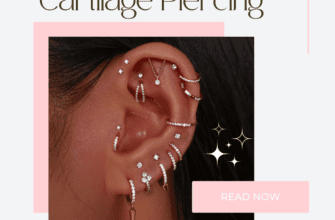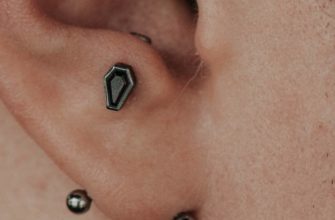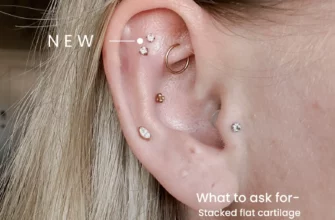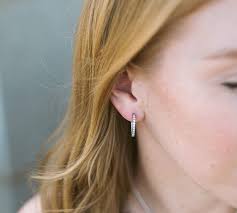When it comes to body modification, individuals often seek unique and trendy ways to express their individuality and personal style. One such popular trend is smiley piercing, which adds a touch of edginess and charm to one’s appearance. However, it’s crucial to be well-informed about the potential risks and side effects that may accompany this procedure, ensuring that individuals can make educated decisions regarding their body modifications.
Awareness is key when it comes to considering smiley piercing as a form of self-expression. Understanding the possible ramifications allows individuals to evaluate whether the aesthetic enhancement is worth the potential hazards involved. By being aware of the risks, people can approach the piercing process with caution and take necessary precautions to minimize any complications that may arise.
Revolutionize Your Health & Lifestyle!
Dive into the world of Ketogenic Diet. Learn how to lose weight effectively while enjoying your meals. It's not just a diet; it's a lifestyle change.
Learn MoreOne important aspect to consider involves the potential hazards. While smiley piercing enhances the appearance of one’s smile, it may come with a few drawbacks. For instance, the procedure involves piercing the frenulum, a thin piece of tissue located inside the mouth, just above the upper lip. This delicate area has a high concentration of blood vessels and nerve endings, which makes it susceptible to bleeding, infection, and nerve damage.
Moreover, individuals need to be mindful of the potential side effects that can occur after the piercing. It is not uncommon for some individuals to experience pain, swelling, and bruising immediately after the procedure, which is a natural response of the body. However, there is also a possibility of more severe side effects, such as gum recession, tooth damage, speech impediment, or difficulty maintaining oral hygiene. Understanding these possibilities can help individuals make an informed decision and take appropriate measures to minimize any adverse effects that may arise.
- Understanding the Risks of Smiley Piercing
- The Importance of Being Informed
- Knowing the Potential Problems
- Understanding the Side Effects
- Exploring the Long-Term Consequences
- Complications to Watch Out For
- Infections and Oral Health Issues
- Dental and Gum Damage
- Speech and Eating Difficulties
- Questions and answers
Understanding the Risks of Smiley Piercing
Exploring the potential hazards and drawbacks associated with smiley piercing is crucial for ensuring informed decision-making in body modification choices. A comprehensive understanding of the risks involved can help individuals minimize potential complications and maintain their overall well-being.
1. Infection: One of the primary concerns with smiley piercing is the risk of infection. The oral cavity harbors numerous bacteria, and when an open wound is introduced through piercing, these bacteria can enter the bloodstream, leading to infections. Proper oral hygiene and regular cleaning of the pierced area can help reduce the likelihood of infection.
2. Gum and Tooth Damage: The positioning of smiley piercing near the gum line increases the chances of damage to the gums and teeth. The constant rubbing of the jewelry against these structures can cause gum recession, which may ultimately lead to tooth sensitivity, enamel erosion, or even tooth loss. Being mindful of the jewelry’s placement and seeking professional advice can help mitigate these risks.
3. Allergic Reactions: Some individuals may experience allergic reactions to certain metals used in smiley piercing jewelry, such as nickel. These allergic reactions can manifest as redness, swelling, itchiness, or even allergic dermatitis. Opting for hypoallergenic materials or consulting with a professional piercer can help prevent such reactions.
4. Nerve Damage: Smiley piercing carries the risk of nerve damage, which can result in altered sensation or numbness in the area surrounding the piercing. Piercing too deeply or in an incorrect location can cause harm to the nerve endings. Choosing a skilled and experienced piercer is essential to minimize this potential risk.
5. Speech and Eating Difficulties: The presence of a smiley piercing can affect speech, making certain sounds or pronunciations more challenging. Additionally, the jewelry can interfere with eating, especially if it comes into contact with the teeth or gums. Adapting to these changes and learning to articulate properly may be required after getting a smiley piercing.
6. Migration and Rejection: Smiley piercings have a higher tendency to migrate or be rejected by the body compared to other types of oral piercings. Migration occurs when the body pushes the jewelry out of the piercing site, while rejection happens when the body treats the jewelry as a foreign object and attempts to expel it. Proper piercing techniques and regular check-ups can help identify migration or rejection early on.
7. Impact on Oral Health: Smiley piercings can have implications for oral health, including increased plaque accumulation, tooth decay, and periodontal disease. The presence of the jewelry can make it more challenging to maintain oral hygiene practices effectively. Regular dental check-ups and meticulous oral care become crucial in preventing potential complications.
Understanding and being aware of the risks involved in smiley piercing empowers individuals to make informed choices regarding their body modifications. Consulting with reputable piercing professionals, following aftercare instructions diligently, and being attentive to any abnormal symptoms can help minimize potential harm and ensure a safer piercing experience.
The Importance of Being Informed
Being knowledgeable about the potential dangers and negative consequences associated with a facial piercing known as the Smiley Piercing is crucial. Being aware of the risks and side effects of such a piercing allows individuals to make informed decisions about their own body and well-being.
Understanding the possible hazards and drawbacks of the Smiley Piercing enables individuals to weigh the benefits against the potential harm. This knowledge empowers individuals to make educated choices, considering factors such as personal health, lifestyle, and long-term implications.
Moreover, being informed about the potential risks of the Smiley Piercing allows individuals to take appropriate precautions and make well-advised decisions throughout the piercing process. By knowing the potential complications that may arise, individuals can ensure they receive proper care, adequate aftercare, and seek professional advice when necessary.
Furthermore, with a broader understanding of the potential side effects, individuals can manage their expectations and make mentally and emotionally prepared for any challenges that may arise from the Smiley Piercing. This awareness equips them to handle any discomfort, adverse reactions, or unforeseen circumstances that may occur along the way.
Overall, the importance of being informed about the potential risks and side effects of the Smiley Piercing cannot be overstated. It enables individuals to make informed choices, exercise caution, and prioritize their own well-being before deciding to undergo the piercing. By being knowledgeable about the potential consequences, individuals can navigate the process more confidently and responsibly.
Knowing the Potential Problems
Understanding the potential issues associated with smiley piercing is crucial for making an informed decision about whether or not to proceed with this type of body modification. This section will delve into the various concerns and drawbacks that individuals should be aware of before getting a smiley piercing.
One of the primary concerns is the risk of infection. Due to the location of the piercing, which is usually in the frenulum, a small piece of tissue between the upper lip and the gums, the risk of bacterial or viral infection is higher compared to other types of piercings. A contaminated needle, unsanitary piercing environment, or improper aftercare can all contribute to the development of an infection.
Another potential problem to consider is damage to teeth and gum tissue. Smiley piercings involve inserting a small ring or barbell through the delicate frenulum, which can come into contact with teeth and gums. Continuous rubbing or biting of the jewelry can lead to enamel erosion, gum recession, and even tooth fractures. It is essential to be mindful of this risk and take necessary precautions to minimize any potential damage.
Additionally, the placement of smiley piercings can affect speech and eating habits. Depending on the jewelry size and position, some individuals may experience difficulties with pronouncing certain sounds or have to adapt their eating techniques to accommodate for the presence of the piercing. This can be particularly challenging during the initial healing period, as swelling and soreness may further impact speech and eating.
Furthermore, there is also the possibility of allergic reactions or sensitivities to the material used in the jewelry, such as nickel or certain alloys. This can result in redness, itching, inflammation, and discomfort around the piercing site. It is crucial to inquire about the jewelry composition and opt for hypoallergenic materials if you have a known sensitivity or history of allergic reactions.
Lastly, it is worth noting that smiley piercings are considered unconventional and may not be well-received in certain professional or social environments. Depending on individual preferences and societal norms, wearing visible piercings like the smiley piercing can potentially limit job opportunities or elicit negative reactions from others. It is important to consider these potential social implications before deciding to get a smiley piercing.
Overall, being aware of the potential problems associated with smiley piercings allows individuals to make an educated choice regarding the risks and benefits involved. It is essential to consult with a professional piercer and thoroughly weigh these factors before proceeding with a smiley piercing.
Understanding the Side Effects

Exploring the potential consequences and reactions associated with smiley piercing can provide valuable insights into its impact on health and well-being. In order to make informed decisions, individuals must possess a comprehensive understanding of the possible adverse effects that may arise with this form of body modification.
An array of adverse effects can emerge from smiley piercings, which may extend beyond the initial discomfort and pain associated with the procedure.
Oral complications such as infections, swelling, and bleeding are among the most commonly reported side effects of smiley piercings.
Infections: The process of piercing the frenulum, the thin piece of skin connecting the upper lip to the gum, can introduce foreign bacteria that may lead to infections. These infections can result in pain, discomfort, and potential complications if left untreated.
Swelling: Following the piercing, it is not uncommon for the frenulum to swell. This can cause difficulty in oral activities such as eating and speaking and may require additional care and attention during the healing process.
Bleeding: Due to its location and the nature of the procedure, it is possible for smiley piercings to cause bleeding both during and after the initial piercing. This can result in prolonged healing times and potential complications.
Additionally, it is important to consider potential dental complications, such as gum recession and tooth damage, which can arise as a result of the constant contact between the metal jewelry and the teeth and gums.
Gum Recession: The consistent pressure exerted by the jewelry against the gums can contribute to gum recession, potentially leading to tooth sensitivity, root exposure, and an increased risk of dental issues.
Tooth Damage: The metal jewelry used in smiley piercings can come into contact with the teeth, leading to chips, cracks, or other forms of dental damage. This can necessitate expensive dental procedures to repair and restore the affected teeth.
It is crucial to approach smiley piercings with full knowledge of the potential side effects, as they can have a lasting impact on both oral health and overall well-being. Understanding these risks can help individuals weigh the potential benefits against the possible complications associated with this kind of body modification.
Exploring the Long-Term Consequences
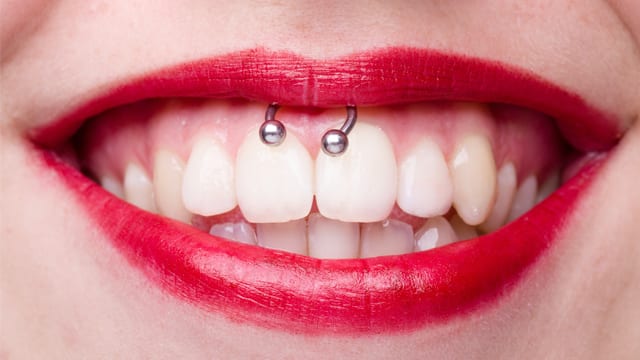
Delving into the cascading effects that may arise as a result of adorning a smiley piercing goes beyond recognizing the initial hazards and temporary repercussions. Unveiling the enduring consequences, this section meticulously examines the potential ramifications that can manifest over time.
Complications to Watch Out For
As with any type of facial piercing, there are certain complications that can arise after getting a smiley piercing. It is important to be aware of these potential issues in order to make an informed decision about whether or not to proceed with the piercing.
One potential complication that individuals should watch out for is infection. Due to the nature of the smiley piercing, located inside the upper lip, the area is prone to bacterial growth. If proper aftercare is not followed, such as regular cleaning with a saline solution, the piercing can become infected. Symptoms of an infection may include redness, swelling, discharge, and increased pain.
Another complication to be mindful of is dental damage. The smiley piercing rests against the gum line, and if the jewelry is improperly sized or constantly puts pressure on the teeth, it can lead to gum recession, tooth wear, or even tooth loss. It is crucial to work with a professional piercer who can properly assess the placement of the piercing to minimize the risk of dental complications.
One common issue that may arise after getting a smiley piercing is migration or rejection of the jewelry. The body may perceive the piercing as a foreign object and attempt to push it out. Signs of migration or rejection include constant discomfort, redness, and the jewelry continuously moving or coming out on its own. If these problems occur, it may be necessary to remove the jewelry and allow the piercing to heal.
Lastly, scarring is a potential complication to be aware of. Depending on individual factors such as skin type and healing ability, scarring may occur after removing the smiley piercing. It is important to understand that scarring varies from person to person, and while some individuals may experience minimal scarring, others may have more noticeable marks.
Overall, it is crucial to understand the possible complications associated with getting a smiley piercing. By being aware of these risks and diligently following proper aftercare, individuals can minimize these complications and ensure a healthier and more successful piercing experience.
Infections and Oral Health Issues
Ensuring proper oral health is crucial when considering a smiley piercing. It is essential to be aware of the potential risks associated with infections and how they can impact oral health. Paying attention to these issues can help prevent complications and maintain overall well-being.
Infections can occur as a result of a smiley piercing and can lead to various oral health issues. When bacteria enter the puncture site, it can cause inflammation, pain, and swelling. These infections can also spread to other parts of the mouth, including the gums and teeth.
Oral health issues can arise as a result of infections from a smiley piercing. These can include gum disease, tooth decay, and ulcers. The presence of oral piercings can make it more challenging to maintain good oral hygiene practices, as the jewelry can interfere with brushing and flossing. This can lead to a buildup of plaque and bacteria, increasing the risk of oral health problems.
Additionally, the placement of the smiley piercing itself can contribute to oral health issues. The jewelry may rub against the gums and teeth, causing irritation and potential damage to the enamel. This can result in tooth sensitivity and an increased risk of dental issues such as cavities and enamel erosion.
It is important to note that every individual’s experience with smiley piercings and oral health can vary. Some people may not experience any complications, while others may face significant issues. Proper care, hygiene, and regular dental check-ups are crucial for minimizing the risks and maintaining oral health.
Dental and Gum Damage
The practice of getting a smiley piercing carries some potential risks and side effects that can affect the health of your teeth and gums. This article highlights the potential harm that this type of piercing can cause to your oral cavity, specifically targeting your dental and gum structures.
One of the main concerns associated with smiley piercings is the risk of dental damage. When the jewelry used in the piercing comes into contact with the teeth, it can lead to chipping, cracking, or even breakage. This can have a significant impact on your oral health and may require costly dental treatments to repair the damage.
In addition to dental damage, smiley piercings can also pose a threat to your gum health. The continuous rubbing of the piercing against the gums can cause irritation and inflammation, leading to gum recession. Gum recession exposes the roots of your teeth, making them vulnerable to decay and sensitivity.
Furthermore, the presence of a smiley piercing can make proper oral hygiene practices more challenging. The jewelry can get in the way of regular brushing and flossing, allowing bacteria and food particles to accumulate around the piercing site. This can increase the risk of gum disease, tooth decay, and bad breath.
It is crucial to understand the potential dental and gum damage that may arise from getting a smiley piercing. Considering the long-term consequences and risks associated with this type of body modification can help you make an informed decision about whether or not to proceed with the piercing. If you do decide to get a smiley piercing, it is essential to maintain excellent oral hygiene and regularly visit your dentist to monitor any potential damage and address any issues promptly.
Speech and Eating Difficulties
Communication and enjoying meals can be challenging for individuals with a smiley piercing.
Speaking clearly and enunciating words may require more effort due to the presence of jewelry in the mouth. The placement of the piercing can affect the movement of the tongue and lips, impacting speech production. Some individuals may experience slurred speech or difficulty pronouncing certain sounds.
In addition to speech issues, eating can also become problematic with a smiley piercing. The jewelry can interfere with the natural movement and function of the tongue, making it harder to chew and swallow food properly. This can result in discomfort or an increased risk of choking.
If you are considering getting a smiley piercing, it is important to be aware of these potential difficulties and assess whether they are worth the aesthetic appeal of the piercing. It may be beneficial to consult with a professional piercer or your dentist to discuss the potential impact on speech and eating.
Overall, understanding the potential speech and eating difficulties associated with a smiley piercing can help individuals make an informed decision about whether it is the right choice for them.
Questions and answers
What is a smiley piercing?
A smiley piercing is a type of oral piercing located on the frenulum of the upper lip, also known as the tissue that connects the lip to the upper gum. It is called a smiley piercing because it is often only visible when a person smiles.
What are the potential risks of getting a smiley piercing?
There are several potential risks associated with smiley piercings. These include infection, allergic reactions to the jewelry, damage to the teeth and gums, interference with oral function, and scarring. It is important to be aware of these risks before deciding to get a smiley piercing.
How is a smiley piercing performed?
A smiley piercing is typically performed by a professional piercer using a hollow needle. The piercer will clean the area, mark the entry and exit points, and then insert the needle through the frenulum. Once the needle is in place, the jewelry is inserted and secured. The entire process usually takes only a few minutes.
What is the aftercare routine for a smiley piercing?
Proper aftercare is crucial for the healing process of a smiley piercing. It involves rinsing the mouth with saline solution or non-alcoholic mouthwash after meals, avoiding spicy or acidic foods, refraining from touching the piercing with dirty hands, and regularly cleaning the jewelry with an antiseptic solution. It is important to follow these instructions to minimize the risk of infection and promote healing.
Can a smiley piercing cause permanent damage?
In some cases, a smiley piercing can cause permanent damage. For example, incorrect placement or excessive force during the piercing process can lead to nerve damage or tooth and gum problems. Additionally, improper aftercare or neglecting to remove the piercing when necessary can result in scarring or other long-term complications. It is crucial to choose a reputable piercer and take proper care of the piercing to minimize the risk of permanent damage.
What is a smiley piercing?
A smiley piercing is a type of oral piercing that goes through the small fold of tissue that connects the upper lip to the gums, creating the appearance of a smile when the jewelry is visible.
Are there any risks associated with getting a smiley piercing?
Yes, there are potential risks involved with getting a smiley piercing. These include infection, gum recession, tooth damage, allergic reactions, and speech impediments.
How can a smiley piercing lead to tooth damage?
A smiley piercing has the potential to constantly rub against the back of the upper front teeth, causing enamel erosion, chipping, or even cracks in the teeth over time.
What are the signs of an infection after getting a smiley piercing?
Signs of an infection may include redness, swelling, pain, discharge of pus, and a fever. If any of these symptoms occur, it is important to seek medical attention.
Can a smiley piercing affect speech?
Yes, a smiley piercing can potentially affect speech. The jewelry can cause a slight lisp or difficulty pronouncing certain sounds. It may take some time to adjust and speak clearly with the piercing in place.





